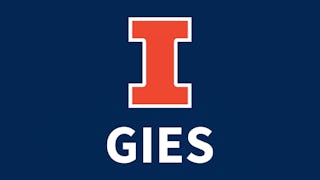Why are markets commonly believed to be the best way of allocating resources and organizing economic activity? This course will answer this critical question while examining its implications for pricing, market entry and exit, short-term and long-term business strategies, and the forecasting of key market variables. The course introduces fundamental topics in the economic analysis of markets, and some of the analytical tools used to study them, as a means to build an economic intuition and fostering an understanding of a variety of market conditions and market forces.

Enjoy unlimited growth with a year of Coursera Plus for $199 (regularly $399). Save now.

Managerial Economics: Buyer and Seller Behavior
This course is part of Strategy & Economic Analysis Specialization

Instructor: Priyanka Sharma
3,647 already enrolled
Included with
(52 reviews)
Recommended experience
What you'll learn
How to explain the basics of supply and demand curves.
How to characterize variable and fixed costs.
How to analyze short-run and long-run equilibria in competitive markets.
Skills you'll gain
Details to know

Add to your LinkedIn profile
16 assignments
See how employees at top companies are mastering in-demand skills

Build your subject-matter expertise
- Learn new concepts from industry experts
- Gain a foundational understanding of a subject or tool
- Develop job-relevant skills with hands-on projects
- Earn a shareable career certificate

There are 4 modules in this course
Welcome to Managerial Economics: Buyer and Seller Behavior. In this course, we will cover the topics of How the Costs of Doing Business Determine Success and Failure, From Cost Structures to Market Supply Curves, and The Economic Outcomes of Competitive Markets. Module 1 introduces the strategic lens of game theory, focusing specifically on Prisoner’s Dilemma situations. This game-theoretic lens helps lay the groundwork for understanding competitive markets, where each market actor, including all buyers and sellers, are doing the best they can to maximize their individual payoffs. Through a simple market simulation and an initial reading of the Adamantium case study, the module then develops intuition for models of supply and demand in competitive markets, including pricing, product allocation, and firms’ cost structures.
What's included
20 videos5 readings5 assignments1 discussion prompt
Module 2 takes a deep dive into short-run market analysis. With a second reading of the Adamantium case study, Module 2 focuses on how cost structures translate to firm-level and market-level short-run decisions and supply curves, how variable and fixed costs create thresholds on the prices that may sustain short-run and long-run firm profitability, how a firm’s short-run decisions significantly differ from long-run decisions, and how all of this begins to map to a market’s equilibrium.
What's included
12 videos5 readings5 assignments
Module 3 introduces entry (break-even) and exit prices, how they map to a market’s long-run supply curve, and why they are fundamental in determining firm profitability. Through examples, including a conclusion to the Adamantium case study, all of the supply and demand concepts in the course are tied together. The module showcases the predictive power of market analysis in determining where markets are going to go in terms of price, capacity, and firm entry and survival. The module then demonstrates the capstone ability of economic models of supply and demand: interpreting market price paths.
What's included
17 videos4 readings5 assignments
This module contains the summative course assessment that has been designed to evaluate your understanding of the course material and assess your ability to apply the knowledge you have acquired throughout the course. This summative assessment consists of two parts. In Part 1, you will answer open-ended questions for two prompts. For Part 2, you will need to upload a file with your answers to the provided prompt. Be sure to review the course material thoroughly before taking the assessment.
What's included
1 assignment
Earn a career certificate
Add this credential to your LinkedIn profile, resume, or CV. Share it on social media and in your performance review.
Build toward a degree
This course is part of the following degree program(s) offered by Illinois Tech. If you are admitted and enroll, your completed coursework may count toward your degree learning and your progress can transfer with you.¹
Instructor

Offered by
Explore more from Business Essentials
 Status: Free Trial
Status: Free Trial Status: Free Trial
Status: Free TrialUniversity of Illinois Urbana-Champaign
 Status: Free Trial
Status: Free TrialUniversity of Illinois Urbana-Champaign
 Status: Preview
Status: PreviewO.P. Jindal Global University
Why people choose Coursera for their career




Learner reviews
52 reviews
- 5 stars
73.07%
- 4 stars
13.46%
- 3 stars
5.76%
- 2 stars
3.84%
- 1 star
3.84%
Showing 3 of 52
Reviewed on Feb 22, 2024
Really great presenter, good content and supporting materials. Quizes actually stimulating and challenging
Reviewed on Oct 6, 2023
The teacher is awesome, letting the complex demand/supply conception become so simplicity. It's really recommended.
Frequently asked questions
To access the course materials, assignments and to earn a Certificate, you will need to purchase the Certificate experience when you enroll in a course. You can try a Free Trial instead, or apply for Financial Aid. The course may offer 'Full Course, No Certificate' instead. This option lets you see all course materials, submit required assessments, and get a final grade. This also means that you will not be able to purchase a Certificate experience.
When you enroll in the course, you get access to all of the courses in the Specialization, and you earn a certificate when you complete the work. Your electronic Certificate will be added to your Accomplishments page - from there, you can print your Certificate or add it to your LinkedIn profile.
Yes. In select learning programs, you can apply for financial aid or a scholarship if you can’t afford the enrollment fee. If fin aid or scholarship is available for your learning program selection, you’ll find a link to apply on the description page.
More questions
Financial aid available,





